Keele University Water Management Plan (2020)
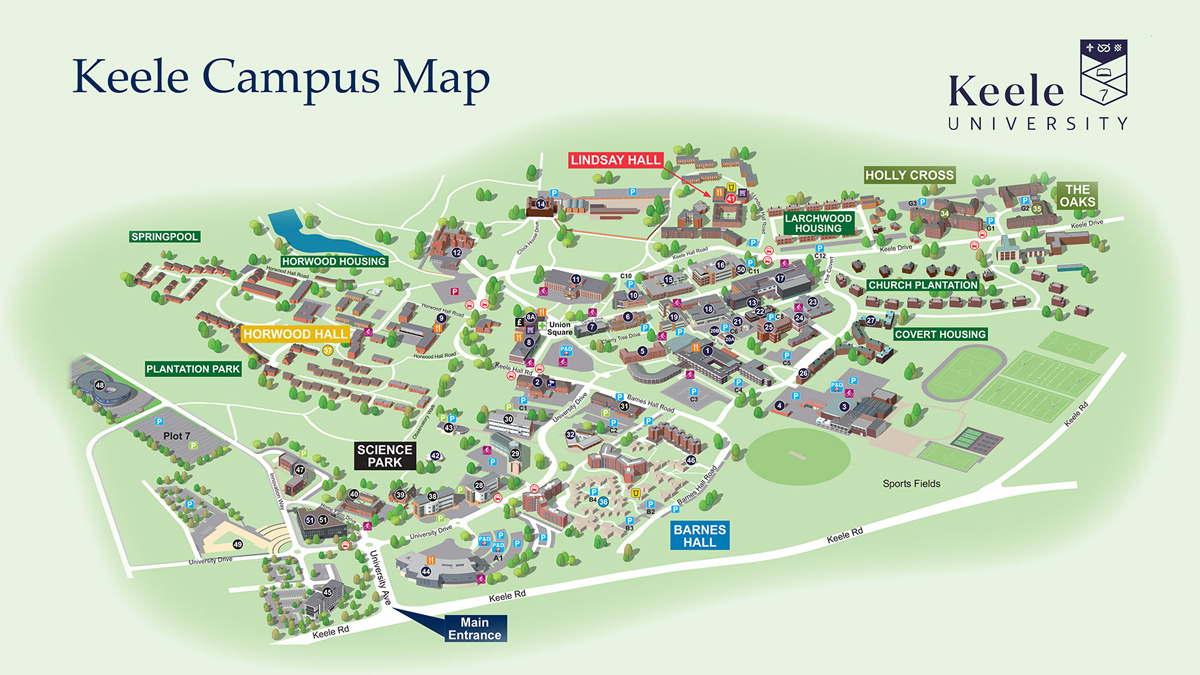
Keele University campus map - Courtesy of Keele University
Keele University is situated in the village of Keele, Staffordshire, on the outskirts of Newcastle-under-Lyme. It was established in the 1940s and has grown considerably to educate approximately 10,000 students on a 625-acre (253ha) campus. The University owns and operates its own water supply infrastructure; this includes approximately 16km of pipework and a service reservoir. Most of the pipework dates back to the 1960s and 70s and has been modified to suit the needs of a growing campus. In 2018, Waterco designed replacement pipework in the region of Observatory Walk for two sections that required renewal due to poor performance and leakage. Following on from the initial design scheme, Waterco were commissioned to produce a Water Management Plan (WMP) covering the entire campus.
Water Management Plan (WMP)
The WMP was required to cover key areas of the water supply and ensure that the University can operate its network effectively and efficiently. The WMP covered the following sections:
- Review of Legislation and Policy.
- Resilience, Leak Detection and Future Management.
- Pipework Replacement and Metering.
The University relies on potable water for its day to day operations and required a formal strategy to ensure that the network is fit for purpose both today and for the future.
Throughout the WMP there was a strong focus on resilience and future network capability to enable the University to expand and have confidence in their onsite water network. The WMP is designed to be the guidance and blueprint to cover all aspect of potable water across the site going forwards.
The majority of the Keele network is in good condition and is fit for purpose. One of the main divers of the Water Management Plan was cost saving and reduction in water leakage across the network. Keele have proactively taken steps to address the leakage and to make their network as efficient as possible.
Strong collaboration between the following organisations has facilitated and then implemented the WMP to provide improvements across the network.
- Energy Manager: Keele University: Elliot Jones
- Senior Operations Manager: Keele University: Paul Richards
- Project Manager: Waterco: Michael Spray
- Technical Specialist – Leakage: Waterco: Keith Stoops
- Design Engineer: Waterco: Ross Tate
- Contractor: North Staffs Pipe Services: Stuart Parrish
Review of legislation and policy
Keele University is supplied with water through their commercial Open Water company, Water Plus (a joint venture with United Utilities). The water entering the site is from Severn Trent and they are responsible for ensuring the quality of the water that enters Keele’s network.
The network of mains and supply pipes at Keele University is private and owned by the university. There is an obligation on Keele University to ensure that the water quality does not deteriorate within their network and that the wholesomeness of the water entering the site remains unchanged at the point of reaching the end user. There are therefore several considerations due to the nature of Keele’s site that need to be reviewed when considering the legislation that needs to be applied.
Keele University is not a licensed water undertaker and it does not operate a private supply, i.e. it does not abstract and treat its own water from a borehole. If Keele University were a licensed supplier and there was a failure of water quality, then it would be subject to an offence under section 70 of the Water Industry Act 1991. If there is a water quality failure as a direct result of Keele University’s actions or omissions, then it would be liable for that failure.
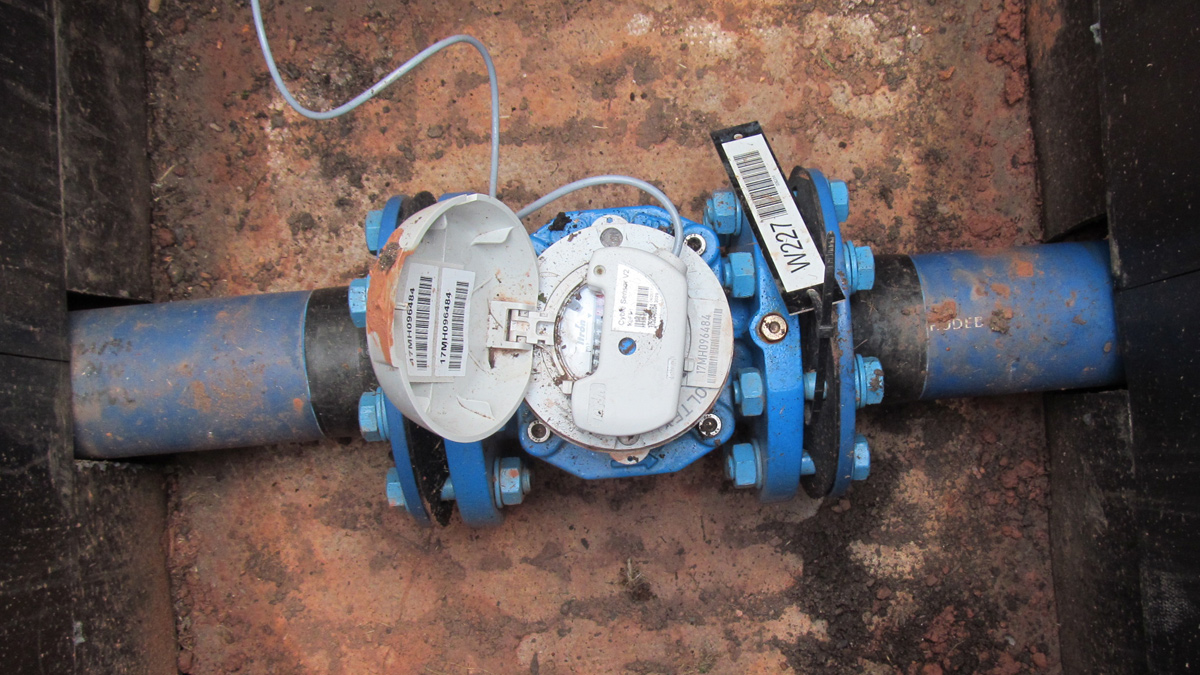
Church plantation chamber – Courtesy of Waterco
The Water Industry Act 1991
Under Section 68 of the Water Industry Act 1991 water companies are under a statutory duty to supply wholesome water for domestic or food production purposes. Severn Trent, as the water undertaker therefore have a statutory duty to provide wholesome water.
Section 68 (2) states that there is only an obligation on the water undertaker to provide wholesome water whilst it is in the water undertaker’s pipes and that they shall not be responsible for unwholesome water once it has left their network. Effectively, Severn Trent is required to provide wholesome water up to the two points of connection with the Keele network.
Whilst Section 69 provides regulation for preserving water quality, it only places an obligation on the water undertaker to ensure they take no steps which could negatively affect the quality of the water once it has left their pipes during its onward transmission. The obligation for water quality whilst within the private network lies with Keele University. Keele University is responsible for continuing to provide water of a wholesome quality.
Keele University have taken steps to ensure that it is not affecting the water quality and that its network is clean and does not pose a risk to human health. In order to achieve this, sampling or CCTV surveys of specific identified pipes will need to be undertaken to establish their condition. A programme of cleaning through flushing or ice pigging should then be designed and implemented. Where pipes are beyond their life expectancy and cannot be effectively cleaned then replacement shall be required. This is something the university are constantly reviewing and they are renewing water mains where needed to ensure the network is operating at its best.
Regulation 8 of the Private Water Supply Regulations
Keele University falls into a category where it is allowing for the onwards transmission of water (public supply), through Keele’s private network of pipes to supply their own property and other third-party properties that are within the campus.
There are several third-party properties within the campus that are not owned by the University, however they are supplied by water through Keele University’s network and they pay Keele University for this water. Under these circumstances, Regulation 8 of the Private Water Supply Regulations applies.
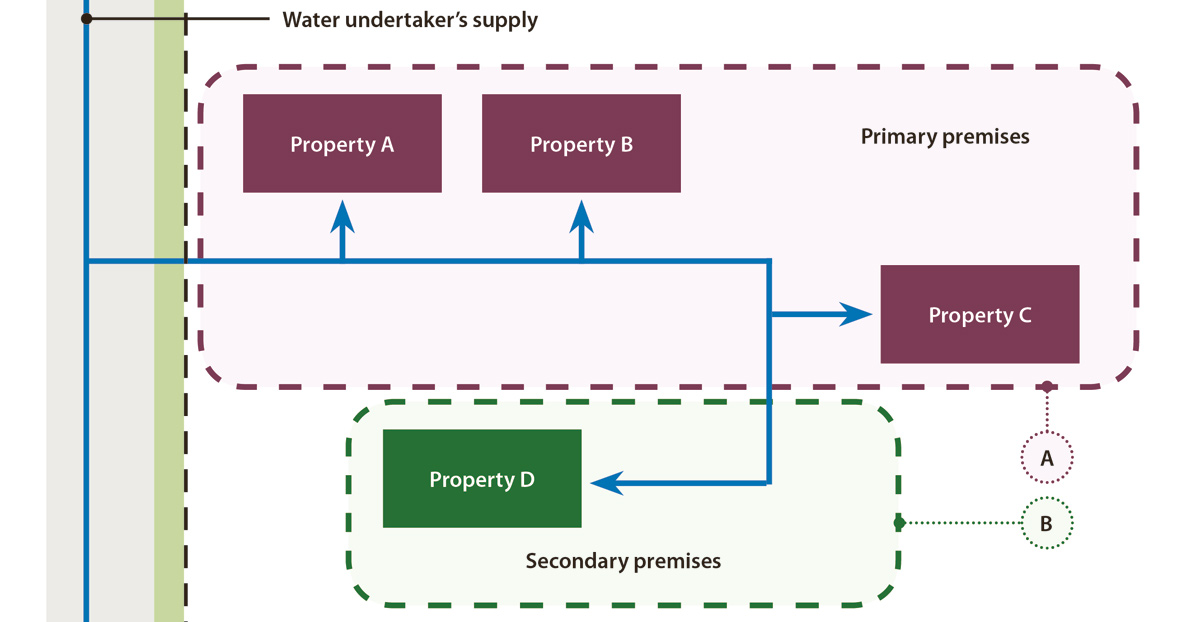
Example of DWI Regulation 8 Supply
The significance of Regulation 8 is that once identified, it is for the local authority, not the water undertaker, to complete a risk assessment on the water supply and implement a monitoring and testing programme.
The local authority currently carries out sampling of the water within the Keele network in compliance with Regulation 8.
Any breach of water quality, as confirmed by the local authority, would be for Keele University to resolve. There have been no breaches of water quality at the campus and that is largely down to the continuous proactive nature of the estates department and onsite engineers.
Resilience, leak detection and future management
Water leakage is a significant issue across the water industry and Waterco and the university have worked closely to reduce their leakage.
The existing network supplies approximately 3000 residents and a large number of buildings on a daily basis. The network in its current state can provide for the required usage (demand). There are areas in the network that require replacing and new assets installing to improve resilience.
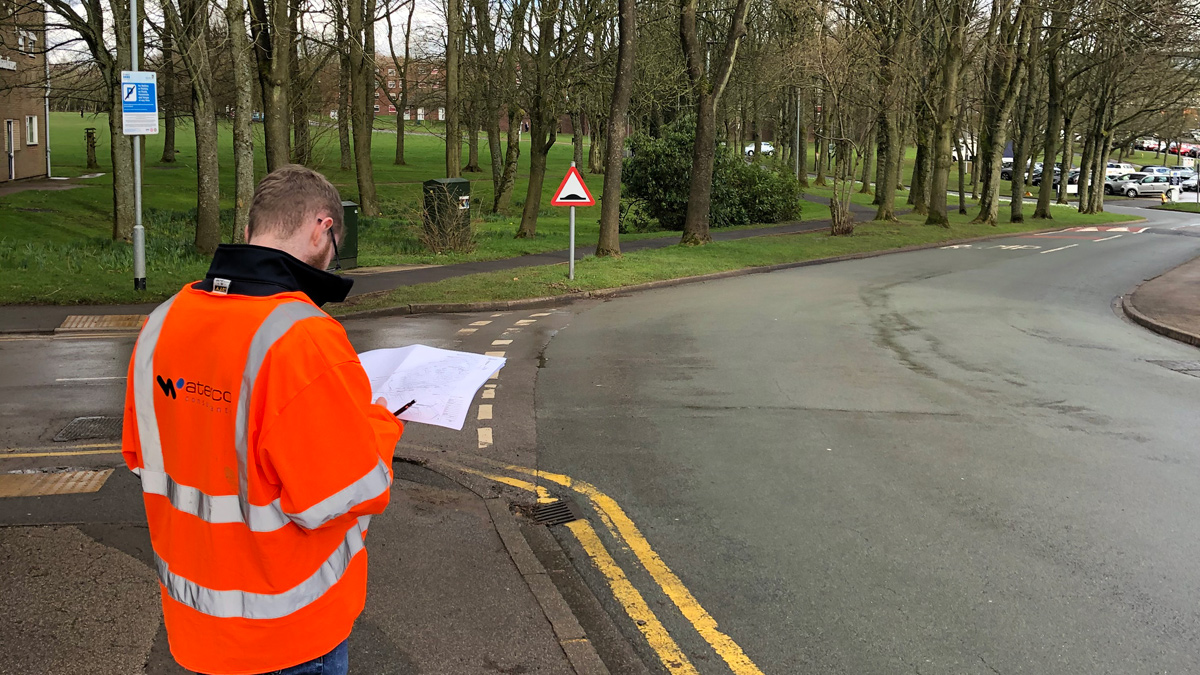
Water engineer Ross Tate – Courtesy of Waterco
The whole university site is fed by two Severn Trent supplies. These supplies are continually monitored, via a Halma Water Management (HWM) meter system, with the data readily provided via secure internet access.
Leakage reduction work has been undertaken since the initial discussions in January 2018 which has helped reduce the night use observed, however, there are further savings to be made to usage rates which would assist in freeing up funding capacity for future development.
Pipework replacement and metering
Pipework replacement strategy
It is important to consider supply resilience and the impact of loss of supply and look at potential for alternative supplies to supplement during critical network issues. This could range from alternative water sources to emergency top up connections, along with re-zoning supplies to make best use of current on-site storage. Sections of the Keele University Campus potable water network have been installed for more than 60 years. The age and material type of a pipe are two major factors that can have a significant impact on the resilience of a water network. The pipework replacement strategy will consider the varying types of materials utilised within the network and age of the pipelines, from which a pipeline replacement strategy will be produced with the aim to enhance the resilience of the water network and therefore make it more cost effective.
The immediate needs are to identify non-preferred materials and replace these. Following this, network connectivity would preferably be checked and then burst frequency and mains material age check, possibly by trial holes.
This strategy will outline a process for identifying the condition of the existing network, identify prioritised areas across the site that will require replacement and how the existing assets can be used to improve the network. It will also set out a framework regarding the materials that should be utilised for the future. Up to date pipework is important to improve resilience, reduce leakage and create a system that can enable the campus to expand.
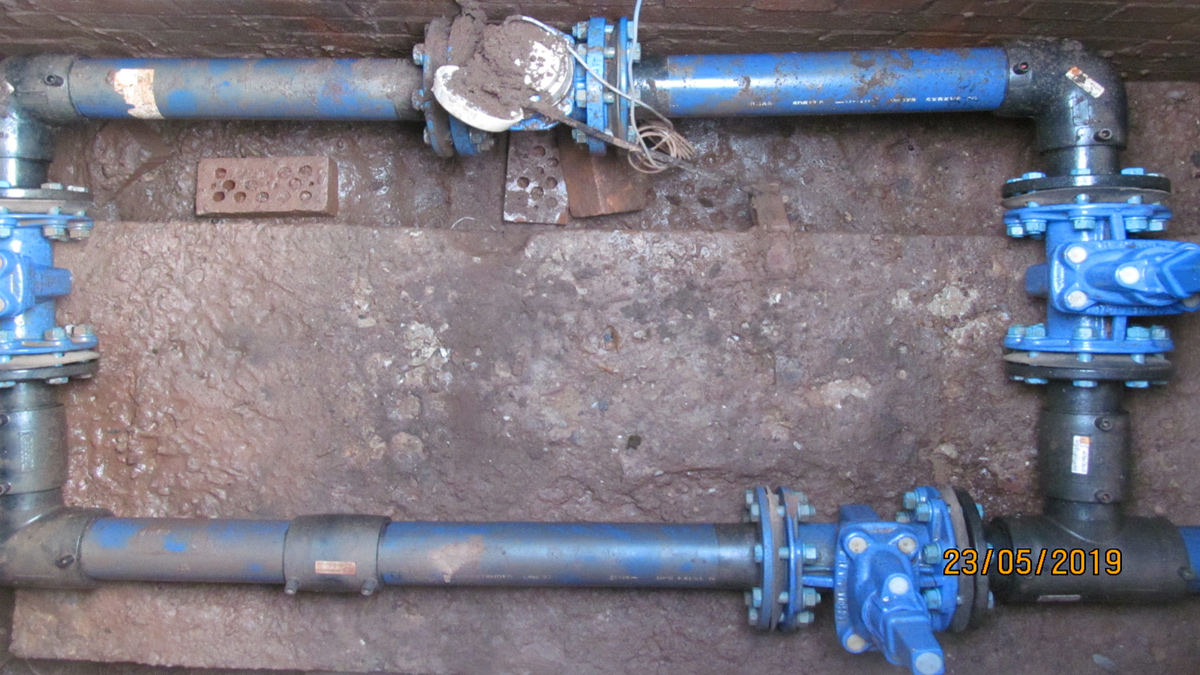
Horwood Z-4T-Y bypass – Courtesy of Waterco
Pipe cleaning/rehabilitation
Pipe cleaning and rehabilitation methods are available to prolong the life expectancy of pipelines in a water network. Cleaning methods include ice-pigging and flushing. Rehabilitation lining methods including cured-in place lining (CIPP) are available but it may be more economical to replace the mains within the network.
Ice-pigging can be used to clean a wide range of pipe materials including lined/unlined ferrous, AC, PE and PVC pipes. Ice-pigging consists of pumping ice (semi-solid) through a pipe to remove sediment, biofilm and other loose materials. Existing hydrants/air valves can be converted to provide access into the pipeline. Consideration of obstructive fittings within the network i.e. meter, prv is required, these need to be bypassed or removed prior to any ice-pigging. The cost of ice-pigging varies with the total volume of ice used. This is dependent on the flow rate, length of pipe, and material.
This method should not be utilised in unlined cast iron and bitumen or coal tar lined AC pipes as disturbance of the internal surface may adversely affect water quality.
Flushing involves introducing higher velocity flows through a pipe to aid the removal of sediment. This can increase discoloration in tuberculated pipes.
Metering strategy and specification
Most water companies have a meter replacement policy, these are not usually public access documents, however, from our industry experience, most meter replacement policies vary between 10 to 20 years. This is generally dependent upon water quality and other locally derived factors. A typical replacement policy is between 10 to 15 years to trigger proactive meter replacement.
These replacement policies are driven by balancing the cost of replacing meters along with technological advances and considering the potential under recording of water use by aged/worn meters (known as meter under registration).
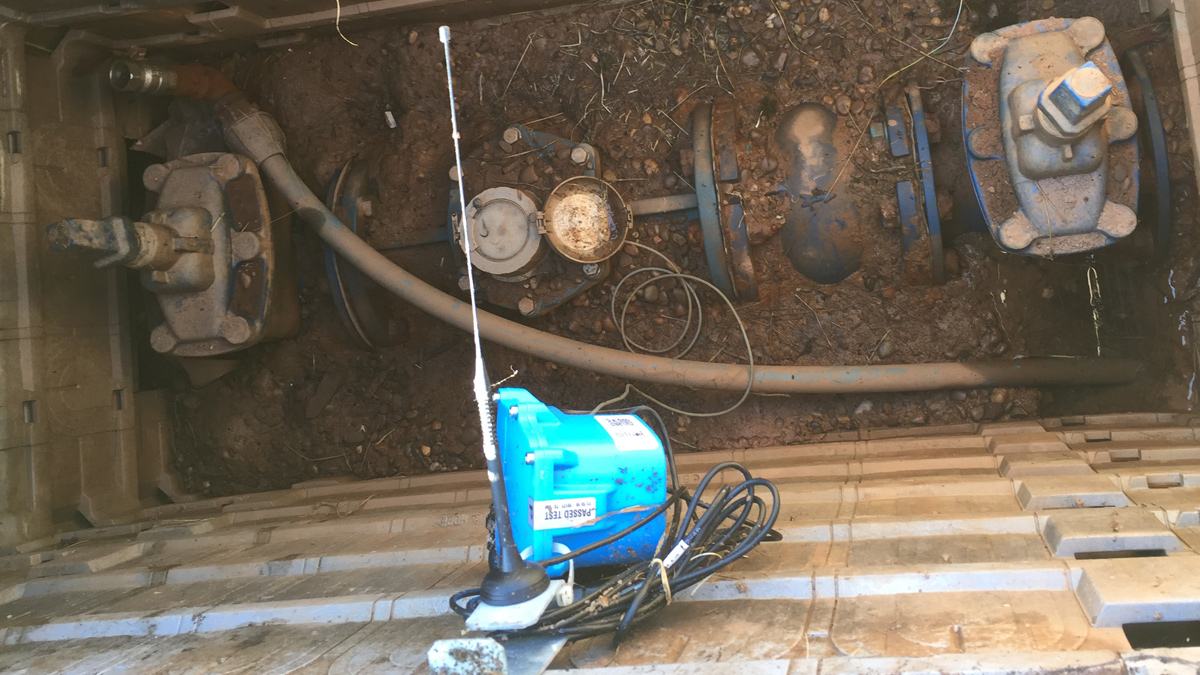
Meter and telemetry – Courtesy of Waterco
This meter under-registration has two main effects, loss of revenue for the water companies and unaccounted for water; which is often assumed to be leakage.
As well as the loss of revenue by water use not being recorded, extra costs can accrue as time and effort is being expended to locate this unaccounted for water which is actually being used legitimately but not recorded (by worn or oversized, typically older meters). It should be noted that even relatively new meters can be under recording especially if leakage has been proven and repaired downstream of the meter (i.e. they become oversized for the reduced flow range).
Summary
Prior to Waterco’s involvement at Keele, the onsite network and supply was in a good condition, however, the university proactively wanted to reduce leakage and improve resilience, thus reducing water bills and having greater confidence in the network. With a thorough review of the relevant legislation and the requirements of the university to operate a private network, they can be sure that they are fully compliant.
Through careful monitoring and analysis of the network operations and by applying appropriate engineering and designs, Keele have been able to significantly reduce their leakage and costs. The main outcome of the WMP is that Keele now have a more efficient and more resilient network that can effectively supply the needs of the current campus and provides a blueprint for the campus to expand.



